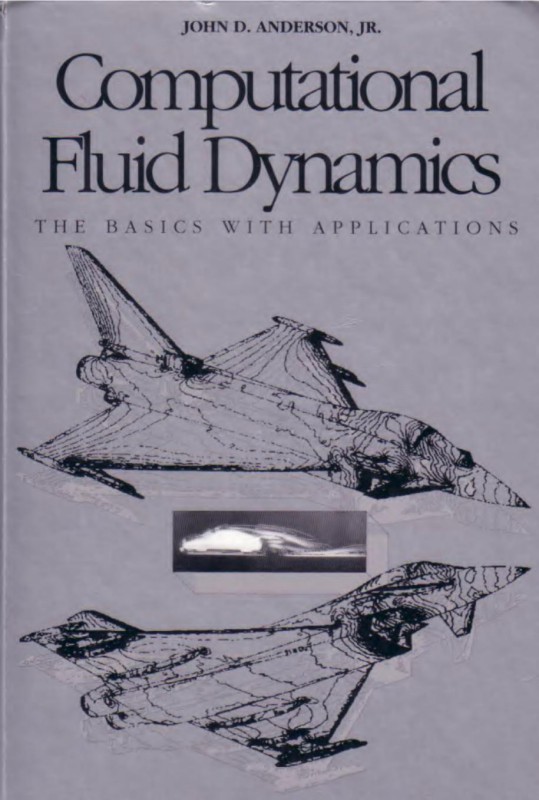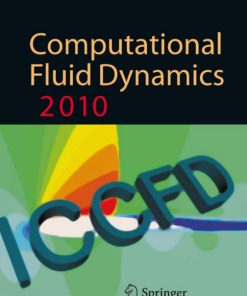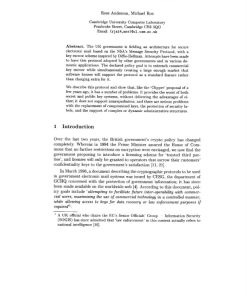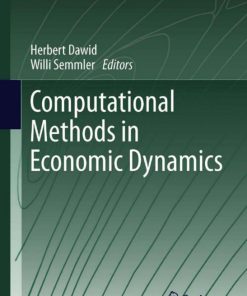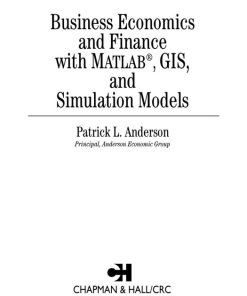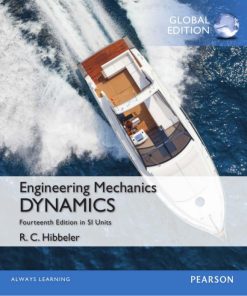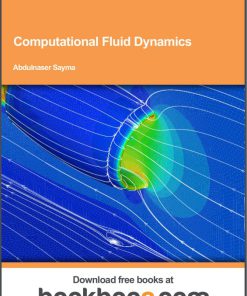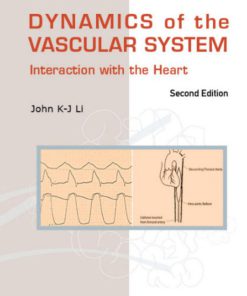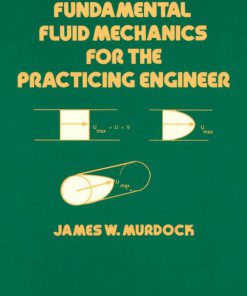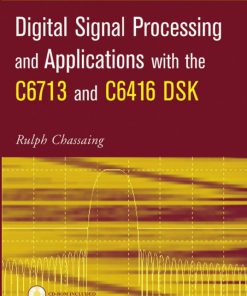Computational fluid dynamics the basics with applications 1st Edition by Anderson ISBN 0071132104 9780071132107
$50.00 Original price was: $50.00.$25.00Current price is: $25.00.
Authors:Johen d Anderson , Series:Mechanical engineering [27] , Tags:Mechanical; Mechtronics , Author sort:Anderson, Johen d , Languages:Languages:eng , Published:Published:Nov 1995 , Publisher:McGraw Hill Education
Computational fluid dynamics the basics with applications 1st Edition by Anderson – Ebook PDF Instant Download/Delivery. 0071132104, 978-0071132107
Full download Computational fluid dynamics the basics with applications 1st Edition after payment
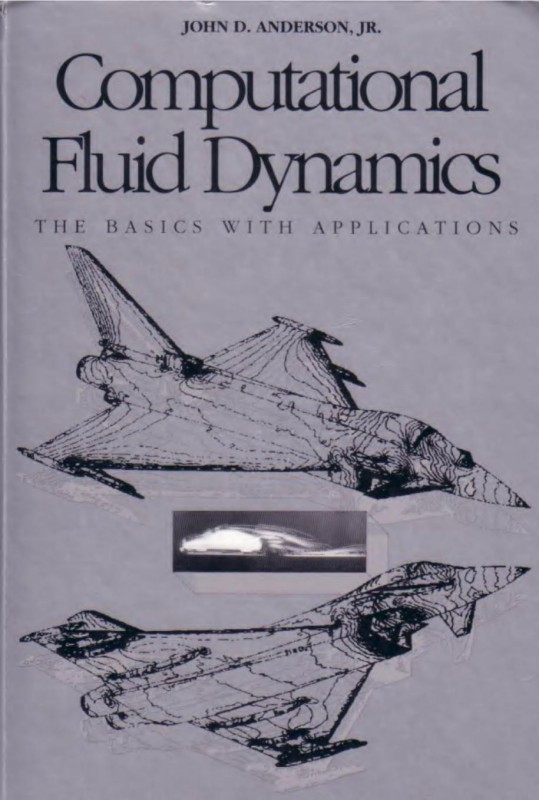
Product details:
ISBN 10: 0071132104
ISBN 13: 978-0071132107
Author: Anderson
“Computational Fluid Dynamics: The Basics with Applications” is a foundational textbook by John D. Anderson Jr., designed to introduce students and professionals to the principles and applications of Computational Fluid Dynamics (CFD). Written in a clear and accessible manner, the book emphasizes understanding the core concepts of CFD, including its mathematical and physical underpinnings, practical techniques, and its role in solving real-world fluid flow problems.
Key Features:
-
Comprehensive Introduction:
The book begins with a historical overview of CFD and its applications in various industries, including aerospace, automotive, and environmental engineering. -
Governing Equations of Fluid Dynamics:
Detailed derivations of the Navier-Stokes equations and their simplified forms provide a strong theoretical foundation. -
Mathematical Fundamentals:
Discussions on the classification of partial differential equations and their behavior help readers understand the nature of fluid flow problems. -
Numerical Methods:
The book explores various discretization techniques, including finite difference, finite volume, and finite element methods, with clear examples and step-by-step explanations. -
Turbulence Modeling:
An introduction to turbulence and its modeling approaches, such as Reynolds-Averaged Navier-Stokes (RANS) equations and Large Eddy Simulation (LES), equips readers with tools to handle complex flows. -
Practical Applications:
The text includes numerous examples and case studies demonstrating the use of CFD in solving real-world problems, such as flow over airfoils and heat transfer. -
Illustrative Approach:
Over 300 diagrams, charts, and example problems help visualize and reinforce the material. -
End-of-Chapter Exercises:
These provide opportunities for students to test their understanding and apply what they have learned to practical scenarios.
Target Audience:
This book is ideal for undergraduate and graduate students studying fluid dynamics, mechanical or aerospace engineering, and applied mathematics. It is also suitable for professionals new to CFD who need a structured introduction to the field.
Why This Book is Valuable:
John D. Anderson, a leading authority in aerodynamics and fluid mechanics, brings his expertise to this text, making complex concepts accessible and engaging. The book strikes a balance between theory and application, providing readers with the tools to both understand and implement CFD techniques effectively.
Conclusion:
“Computational Fluid Dynamics: The Basics with Applications” is a must-have resource for anyone looking to develop a solid understanding of CFD. Its clarity, depth, and practical focus make it a trusted companion for students and practitioners alike.
Computational fluid dynamics the basics with applications 1st Table of contents:
Chapter 1: Introduction to Computational Fluid Dynamics
- What Is Computational Fluid Dynamics?
- Historical Background
- Applications of CFD
- Advantages and Limitations of CFD
Chapter 2: The Governing Equations of Fluid Dynamics
- Conservation Laws of Fluid Motion
- Derivation of Governing Equations
- Continuity Equation
- Momentum Equation
- Energy Equation
- Boundary and Initial Conditions
Chapter 3: The Mathematical Behavior of Partial Differential Equations
- Classification of Partial Differential Equations
- Behavior of Hyperbolic, Parabolic, and Elliptic Equations
- Initial and Boundary Value Problems
Chapter 4: Discretization Methods
- Introduction to Discretization
- Finite Difference Method
- Finite Volume Method
- Finite Element Method
- Comparison of Discretization Methods
Chapter 5: Solution Techniques for Systems of Linear Algebraic Equations
- Direct Methods
- Iterative Methods
- Matrix Storage and Manipulation Techniques
Chapter 6: The Finite Volume Method for Diffusion Problems
- Derivation of the Discretization Equations
- Implementation of Boundary Conditions
- Solution Procedures
Chapter 7: The Finite Volume Method for Convection-Diffusion Problems
- Discretization of Convection Terms
- Upwind Differencing Scheme
- Higher-Order Schemes
- Stability and Convergence
Chapter 8: The Finite Volume Method for Unsteady Flows
- Discretization of the Time Derivative
- Explicit and Implicit Methods
- Stability and Time-Step Selection
Chapter 9: Application of Numerical Methods to Incompressible Flows
- Pressure-Velocity Coupling
- SIMPLE and SIMPLER Algorithms
- Applications to Lid-Driven Cavity Flow
Chapter 10: Turbulence Modeling
- Introduction to Turbulence
- Reynolds-Averaged Navier-Stokes Equations
- Common Turbulence Models
- k-ε Model
- k-ω Model
- Large Eddy Simulation (LES)
Chapter 11: Best Practices for CFD Simulations
- Grid Generation
- Selection of Time-Step and Solver Settings
- Validation and Verification of CFD Results
- Common Errors and How to Avoid Them
People also search for Computational fluid dynamics the basics with applications 1st:
theoretical and computational fluid dynamics
notes on computational fluid dynamics general principles
introduction to computational fluid dynamics
international journal of computational fluid dynamics
the finite volume method in computational fluid dynamics
You may also like…
eBook PDF
Computational Fluid Dynamics 2010 1st Edition by Alexander Kuzmin ISBN 3642178847 9783642178849

